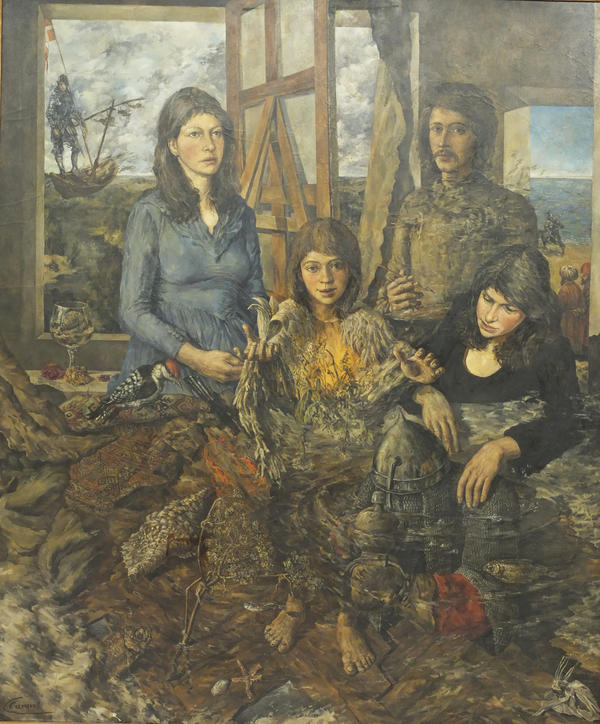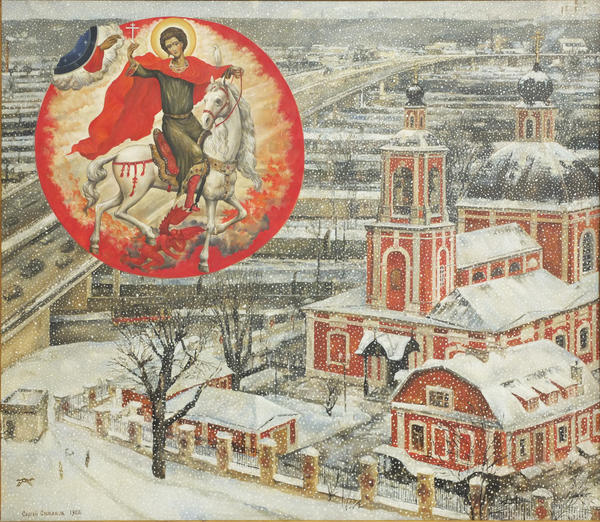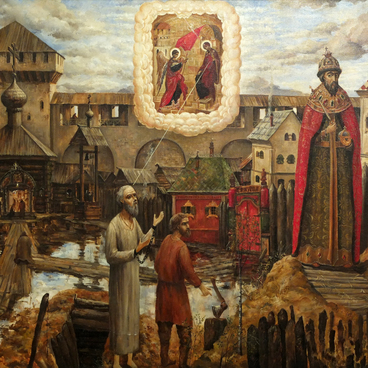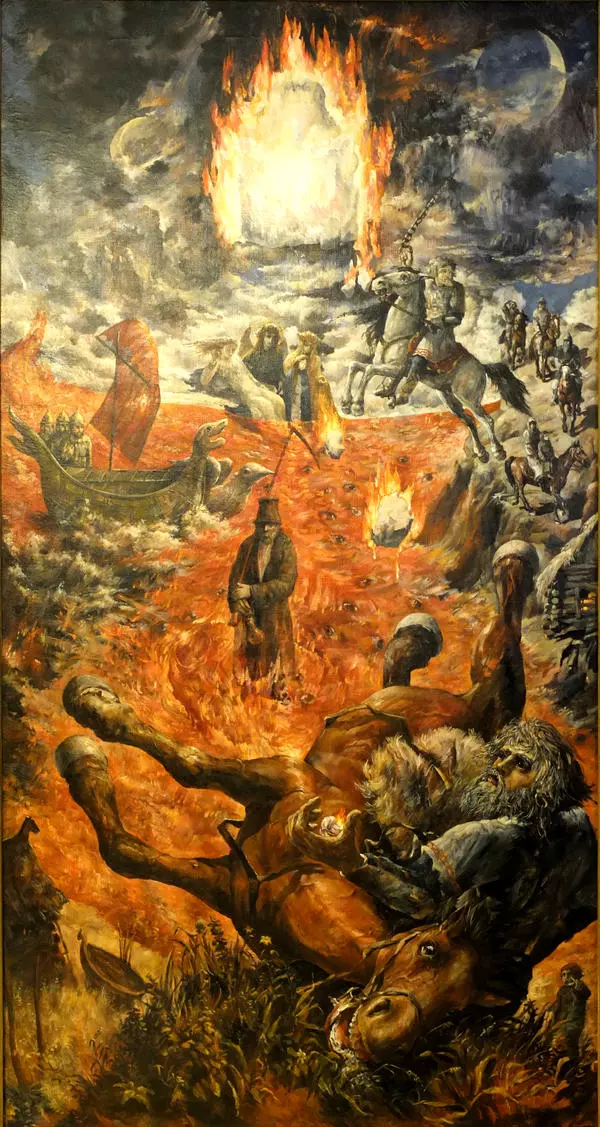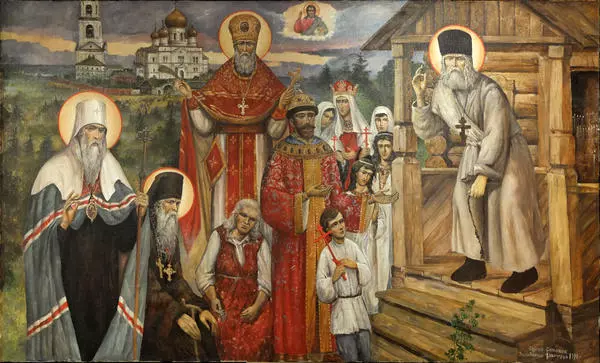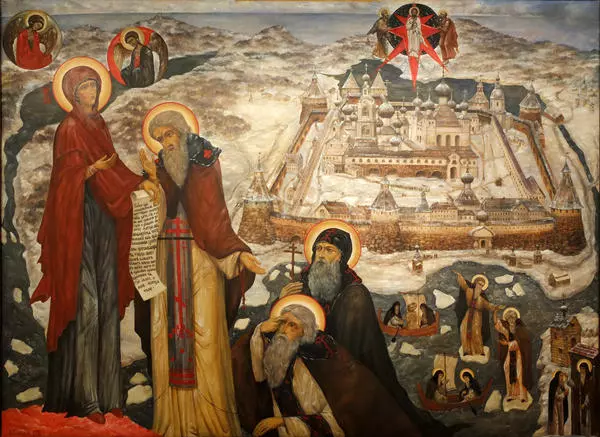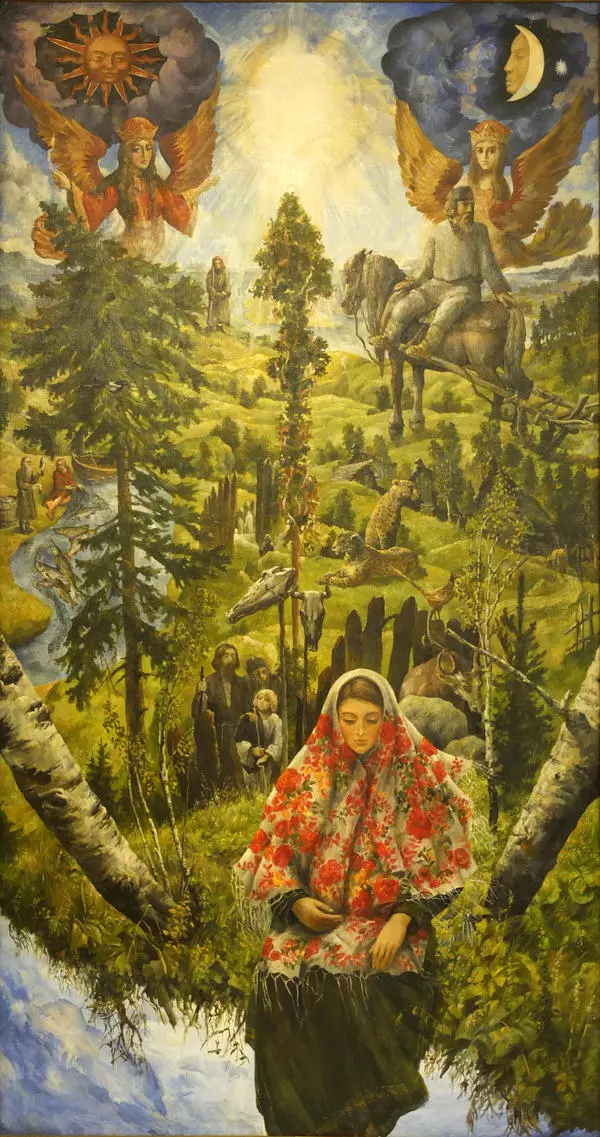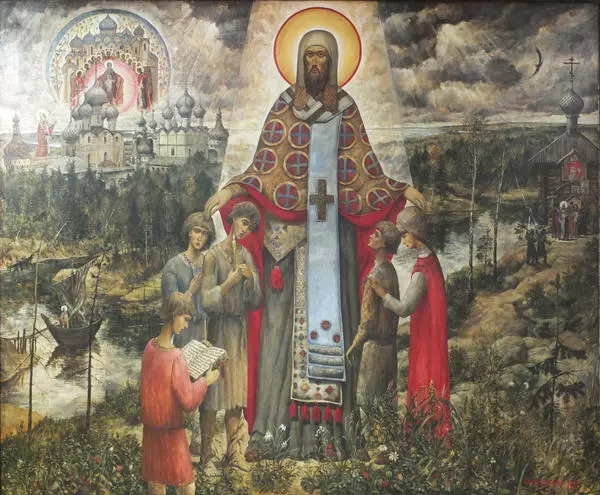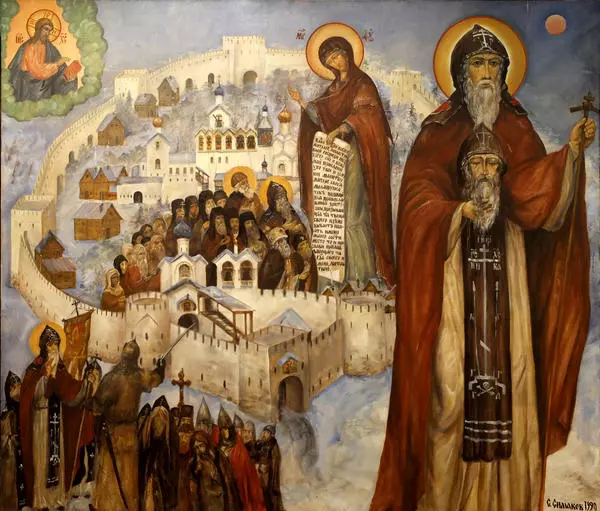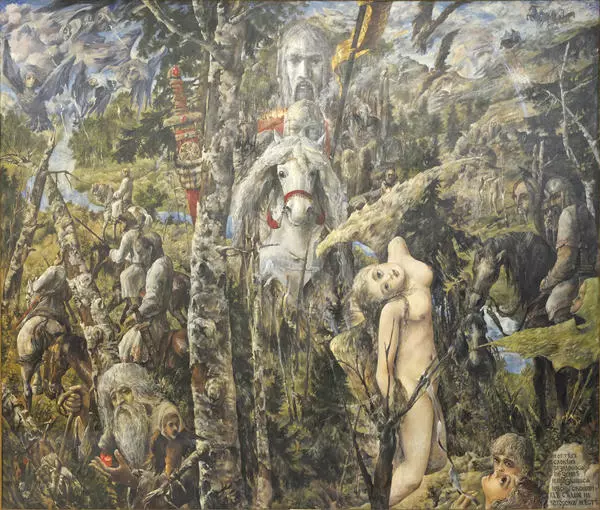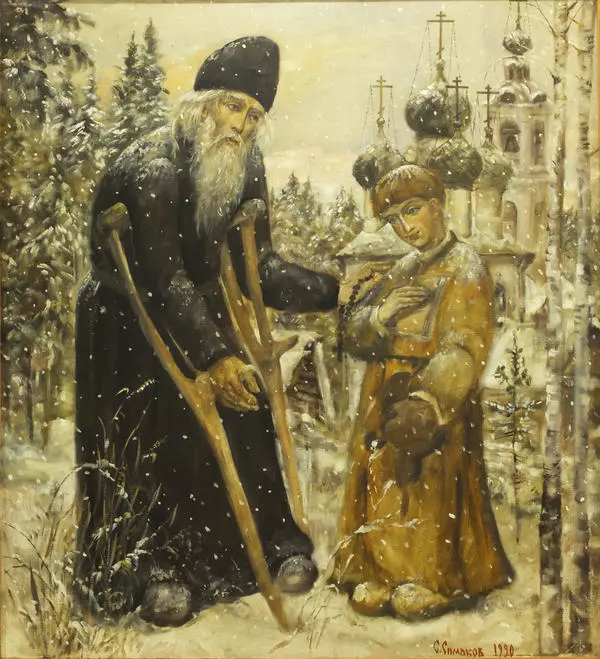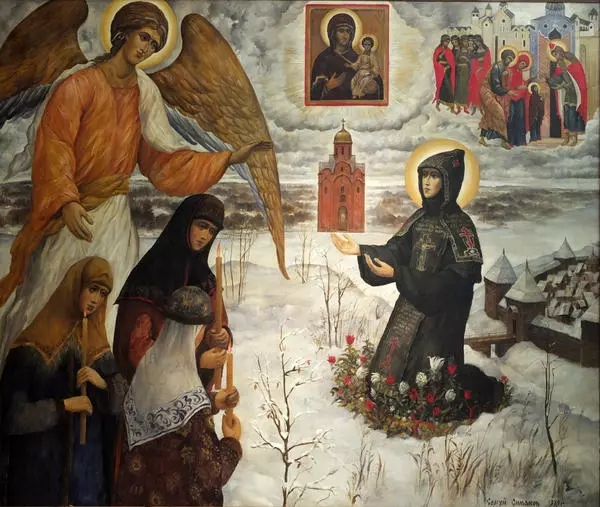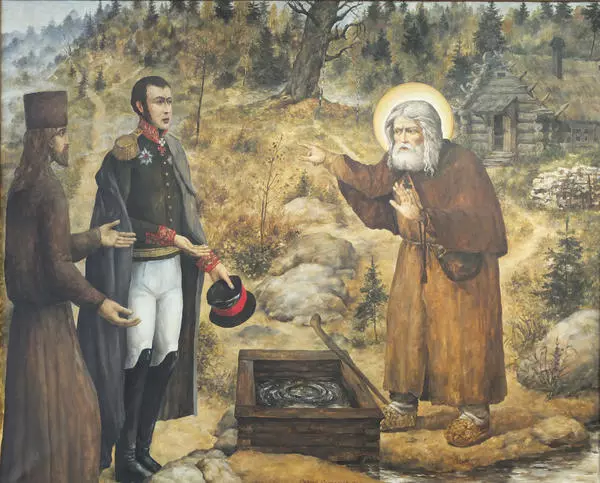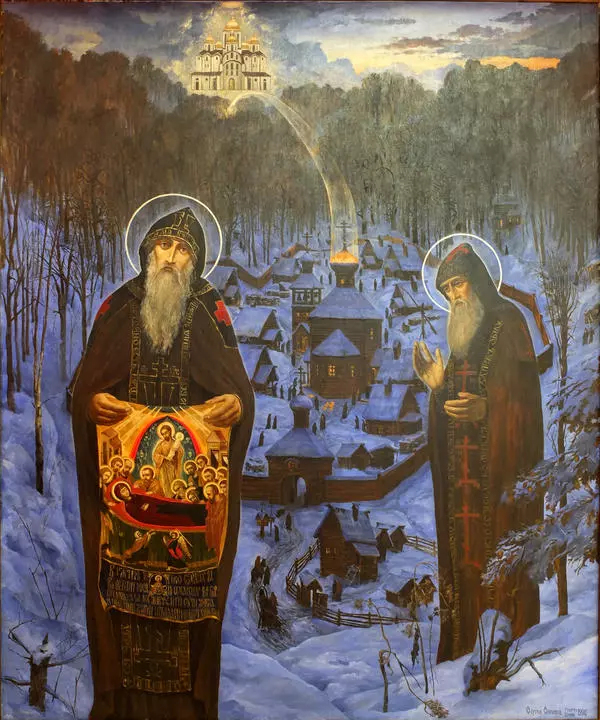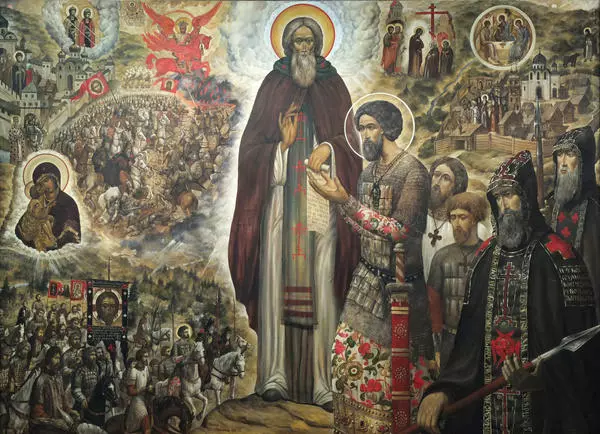In the 1970s the artist, Sergei Simakov, took a great interest in avantgarde movements in painting such as surrealism, expressionism and abstract art. In 1977 he joined the important non-conformist group of Twenty Moscow Artists whose members exhibited their works in the basement of one of the buildings in Malaya Gruzinskaya street in Moscow. The 1979 Balcony is surrealist, its figurative images are presented in a paradoxical combination of shapes, images are fluid and improvised in a manner resembling a night fantasy.
The balcony itself has a group of people. The woman on the left as well as on the right is the artist’s wife Elena. At the centre of the canvas Sergei put his daughter Alexandra and showed himself behind her. On the right side, the figures are standing half submerged in water while on the left, the figure of his wife is part-hidden behind a rug. The key characters are surrounded by a great variety of fine details, such as shells and dried flowers, birds and animals.
Seen in the door and window frames are secondary characters. To the left, flying on a boat with a broken mast, is a knight of the Order of Malta embodying the West. A man on the horseback is depicted to the right, against the background of the high and bright Oriental sky.
Creating the irrational space in the painting Simakov was imitating, among others, Salvador Dali, his favourite artist at that time. As the painter recollects, in those years he was dreaming “of doing something unheard of, knocking the viewer down with novelty”. However, the compositional treatment of this work resonates with the works by other masters: there are similarities with the way groups of people on a balcony were depicted by Spanish romantic artist Francisco Goya, Italian Classicist Eugene de Blaas or French impressionist Édouard Manet.
The balcony itself has a group of people. The woman on the left as well as on the right is the artist’s wife Elena. At the centre of the canvas Sergei put his daughter Alexandra and showed himself behind her. On the right side, the figures are standing half submerged in water while on the left, the figure of his wife is part-hidden behind a rug. The key characters are surrounded by a great variety of fine details, such as shells and dried flowers, birds and animals.
Seen in the door and window frames are secondary characters. To the left, flying on a boat with a broken mast, is a knight of the Order of Malta embodying the West. A man on the horseback is depicted to the right, against the background of the high and bright Oriental sky.
Creating the irrational space in the painting Simakov was imitating, among others, Salvador Dali, his favourite artist at that time. As the painter recollects, in those years he was dreaming “of doing something unheard of, knocking the viewer down with novelty”. However, the compositional treatment of this work resonates with the works by other masters: there are similarities with the way groups of people on a balcony were depicted by Spanish romantic artist Francisco Goya, Italian Classicist Eugene de Blaas or French impressionist Édouard Manet.

